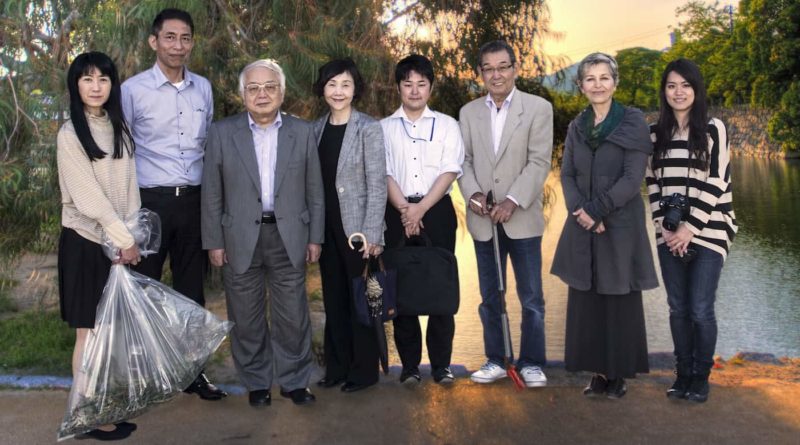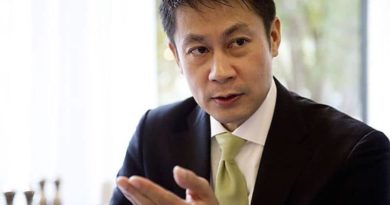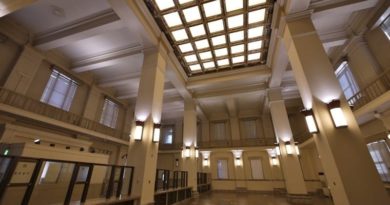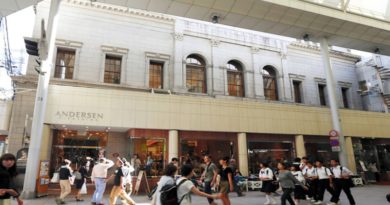Green Legacy
Former UNITAR Hiroshima director and world citizen Nassrine Azzimi talks about the path that led her to Hiroshima and about her current work with Green Legacy.
Despite rumors in the days and weeks after its destruction that nothing would grow in the A-bombed city of Hiroshima, nature rebounded and the sight of new shoots springing up amongst the debris provided great hope and encouragement to the survivors. Some trees even survived the blast and, today, about 170 hibaku-jumoku (A-bombed trees) of them are registered and protected by the city.
World citizen Nassrine Azzimi is co-founder of Green Legacy, an initiative to distribute seeds and saplings of A-bombed trees throughout Japan and around the world as a means of spreading Hiroshima’s message of peace. Nassrine was kind enough to talk with us about Hiroshima, herself and the Green Legacy initiative.
Nassrine, tell us about your background and how you came to be in Hiroshima.
I was born in Iran, am a Swiss citizen, my family lives in the United States, and my home is in Hiroshima – so you could say I am an Earth citizen… And actually I kind of feel that way. Culturally I think Asia is in my blood, and probably having reached adulthood in Switzerland, my love of nature and ecological leanings may be quite Swiss. But you know, I follow the International Space Station (ISS) closely and when one sees the Earth through images transmitted by the ISS — with this delicate, thin atmosphere the only thing separating us from the vast, dark, inhabitable space — one really develops a feel for our collective citizenship of this craft we call Earth. We are fortunate to have this gorgeous blue-green planet, and so careless and incompetent, as its stewards.
I first studied political science and international relations in Switzerland – at the universities of Lausanne and Geneva, respectively. Later I got a postgraduate degree in urban studies, which maybe helped connect me from the abstract to the tangible. I started working for the UN Institute for Training and Research (UNITAR) just out of graduate school and was fortunate, to start my career with such a small UN body, it was more like an NPO – at quite a young age I was given responsibilities unheard of in typical bureaucracies: I had to raise funds for my projects and manage them. I guess early on this sense of enterprise — and a very enlightened boss — shaped my professional values and working style.
I had visited Japan on a first private visit in the 1980s – and somehow landed for a three-day retreat on Mount Koya… It is fair to say I fell in love with Japan, but the idea I would one day come to live and work here was just not on life’s radar screen. My first real encounter with Hiroshima was around 2000. At the time I was chief of UNITAR’s New York Office and by a series of serendipitous events, was tasked with setting up UNITAR’s Asia-Pacific branch here. It took us almost three years of preparation, with the prefecture notably. The rest is history: In 2003 UNITAR became the first UN body with a regional office in Hiroshima, in 2003. By then it had also become clear to me that Hiroshima was a unique place.
What were first your impressions of the city, why did you decided to stay?
Well, in the beginning we were so busy with the office, there was hardly time for much. But little by little I found my bearings, thanks to a bicycle (essential, in this flat city!) and started exploring what is in fact a water city — seven rivers opening into the delta, it must have been stunningly beautiful. Intellectually of course I was working daily with the narrative of the atomic bombing, but ‘knowing’ is quite different from ‘feeling’ – so it took me sometime to grasp what had happened here on 6 August 1945, what had been there before and what the catastrophe of the atomic bombing meant for the future.
When I decided to step down from my position in 2009, I chose to stay. Hiroshima has given me a sense of purpose — I don’t have children of my own, but living in Hiroshima has made me more engaged, to work for the sake of my nieces, nephews, godchildren and just about all of us — so that what befell this city in 1945 never happens again, anywhere. I guess this sense marks most things I do. Hiroshima’s real philosophy and contribution — to forgive but not to forget is a powerful concept – more so at a time when in so many countries seem to forget but not to forgive…
Would you tell us about the beginnings of Green Legacy?
Well, maybe I should first speak of the trees? Some 170 trees in about 55 locations within a two-kilometer radius of the bomb’s hypocenter have been repertoried by Hiroshima City as A-bombed trees (hibaku-jumoku). It’s a miracle they survived in the first place, but then there was a second miracle — nurtured over the decades, they made it to the 21st century.
I love trees. In the living realm, humans have few allies as essential, generous or frugal as trees. Their roots, trunks, bark, leaves, fruit, nuts, shade, cool, warmth, their ability to hold off winds or erosions, filter the air and the waters, their beauty and grace, it is just breathtaking how much trees give us, and how little they ask in return. I always ask visitors to imagine the Peace Avenue (Heiwa odori) without trees… In the case of Hiroshima trees, all this is amplified by their message, about the threats of nuclear weapons…
Over the years I had seen these trees, and knew of citizens’ efforts, to spread them around the world (I also read the wonderful book by the husband-wife team of Mandy Conti and David Petersen called ‘Survivors’). Hundreds of professionals around the world with whom I had worked throughout my career often asked me, ‘Nassrine what can we do to spread the message of Hiroshima?’ — so my first simple idea was to put all these disparate parts together, allowing the survivor trees to become ambassadors of Hiroshima, globally. Of course a good idea without implementation is only wishful thinking — so I sought the help of my friend Tomoko Watanabe, executive director of the local NPO, ANT-Hiroshima. She is a real dynamo, and soon thanks to Tomoko we had a whole network of volunteers rallying around the idea — including a marvelous gardener Chikara Horiguchi, who knows each of the survivor trees inside out, and our very able manager, Hideko Yamada. We were still taking our time to prepare though, when the disasters of March 11, 2011 happened, we felt the message of the trees had become ever more urgent. We launched in July 2011. In addition to UNITAR and ANT, we are endorsed by many including the City, Hiroshima Peace Culture Foundation, the Botanical Garden, Hiroshima University as well as the Prefecture.
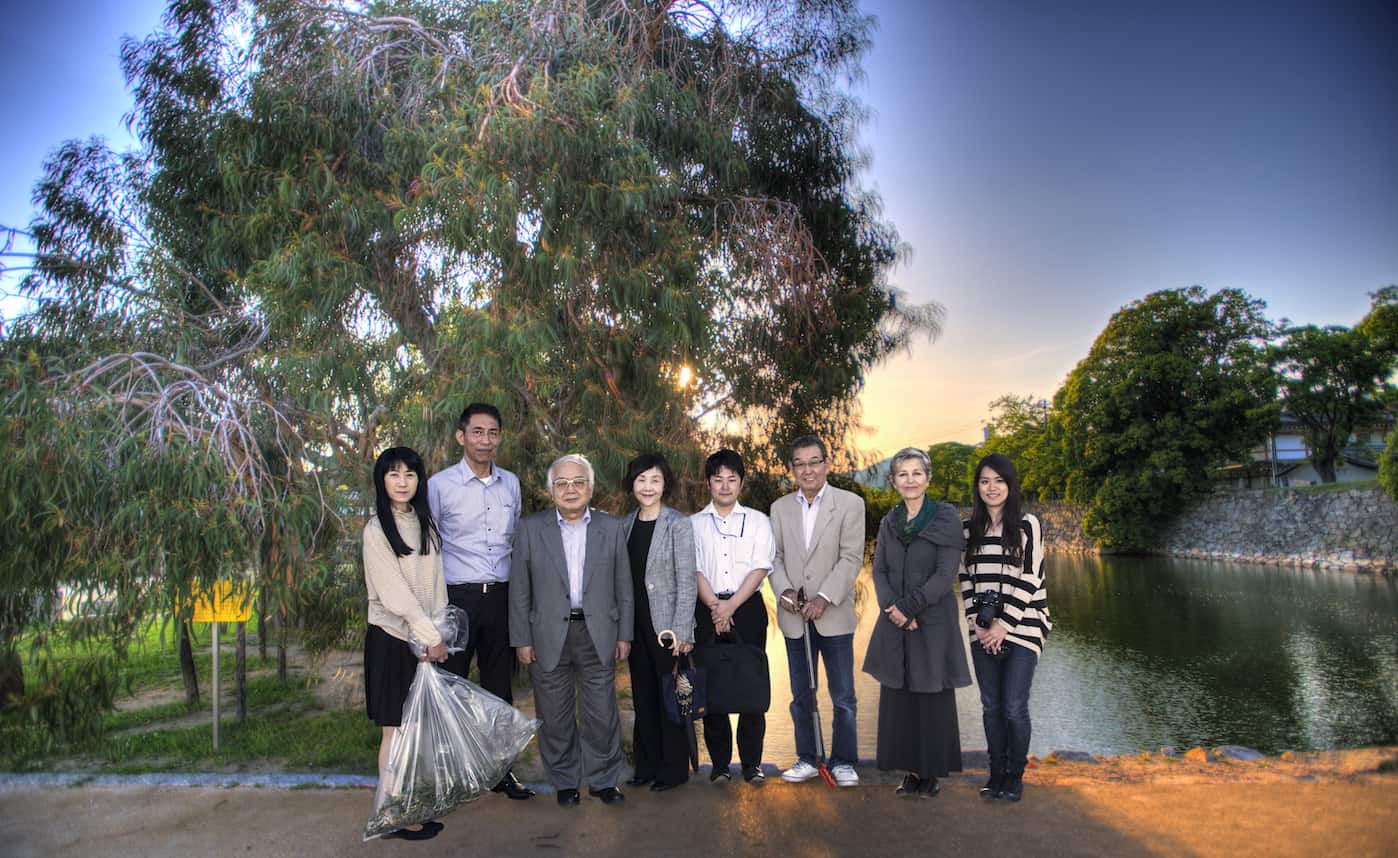
Where is Green Legacy now and what is its vision for the future?
Well, there are still some 17,000 nuclear weapons worldwide, and only 170 Hiroshima survivor trees – in my lifetime I’d definitely like to see those numbers reversed! Of course the point is not to plant everywhere, but to pass on the message, have people from different walks of life around the world think about what it means for a tree – or any living being – to be on this fragile planet alongside these atrocious weapons. Needless to say, the trees are spreading, we now have partners in some 20 countries. Mayors of Peace cities are also getting involved, so our master gardener, bless him, is super busy! And of course we would love to have the trees of Nagasaki, too. The beauty of Green Legacy – actually any project involving trees — is you can hardly go wrong, trees are that generous!
Can those moved by a visit Hiroshima help spread its message and contribute to its legacy?
Oh God yes! I marvel still at the art of channeling rage, hatred, wounds and grief to something that transcends one’s own pain. As my Sufi master used to say, you must find a way, to turn your personal rage into universal outrage. Actually, Joy (GetHiroshima co-founder) just shared a really chilling observation: when one visits Ground Zero in New York, there seems only sorrow and anger – one can understand that, but it highlights even more Hiroshima’s strength — how it has avoided mere recrimination, to move to the next level – transcend and transform its suffering into something more universal. We all aspire to do that in our personal lives, and must learn to do it collectively, as well. It is the only path forward. The survivor trees I often feel, are simply showing us how.
Read more about Green Legacy and its work at http://www.unitar.org/greenlegacyhiroshima


